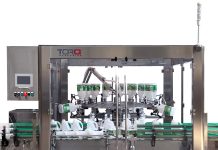The market of wine closures offers a wide range of solutions very different as for functionality, use, and costs. As you can easily imagine, the most important market segment is covered by cork, single-piece natural corks or technical corks, and only a small segment is reserved to alternative closures (picture 1); however, there is a growth trend for alternative closures. This is due to the fact that cork, as a material of natural origin, presents unique characteristics yet diffi cult to standardize. The problems, whose solution is rather complex, are mainly due to the presence of compounds such as 2,4,6-trichloroanisole (TCA) and – tribromo anisole (TBA), considered the responsible for the corky savour/odour of wine; this pushed the producers and the resellers of the sector to look for alternative solutions [1]. Besides, emergent countries in the wine sector, such as Australia, New Zealand, Chile, Argentina, are focusing on alternative solutions both for economical reasons and their geographical distance from the production areas of cork. In fact these countries are supporting scientifi c studies aimed at evaluating the performances of the diverse types of closures; in particular New Zealand and Australia are studying the behaviour of screw caps.
The development of the market and the use of screw caps have been quite anomalous with moments of great interest followed by phases of abandon. In the recent years their use is in growth thanks to the “New Zealand Screwcap Wine Seal Initiative”, established in 2001 by several wine producers of New Zealand who decided to look for a valid alternative to cork also for the above mentioned problems. That association supports and fi nances experiments on a number of wines to test the effectiveness of various types of screw caps and synthetic closures in comparison to natural corks [2]. The screw closure by defi nition is the so-called “ROTE”, with the typical dimensions 30×60 mm (diameter – height) for 750 mL bottles and 30×45 mm for 375 mL bottles, already used in Switzerland in the 70s. It consists of an aluminium capsule with a liner inside. The seal (or liner) consists of some layers of polyvinylidene chloride (PVDC) and expanded polyethylene (PE), in variable number depending on the type; the types of liner mainly used are two and the difference between them is due to the presence/absence of a tinfoil inside them. The Saranex liner consists of layers of polyethylene, PDVC and cellulose; it was the most common in the past years with quite good performances but with some permeability to oxygen. The Saran Tin Foil liner has a tinfoil with the thickness of 20 μm coupled to a layer of polyethylene of 2 mm, which goes in contact to the bottle mouth, cellulose and polyvinylidene chloride (PVDC, 19 μm). In both types of liner the layer going in contact to the wine consists of expanded polyethylene also ensuring the tightness and the adaptability to the mouth of the bottle, even when this is not perfectly regular (Picture 2) [3, 4]. At the moment of the bottling the capsule is threaded directly on the neck of the bottles that, needless to say, is different from the ones used for cylindrical closures, through the compression on top of the bottle and around the neck [5].






